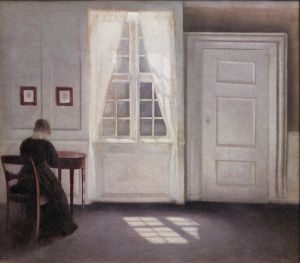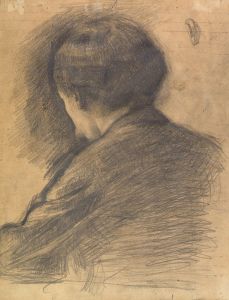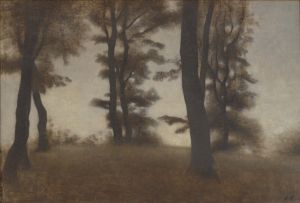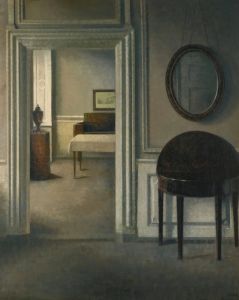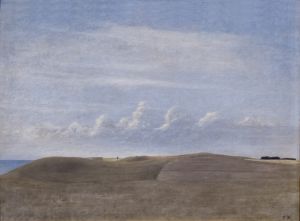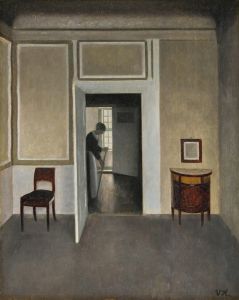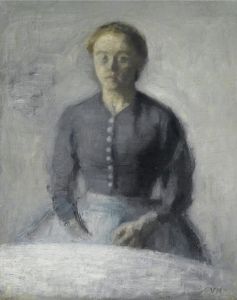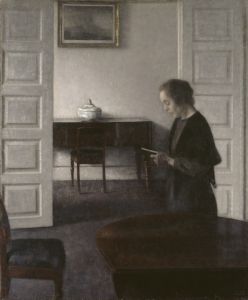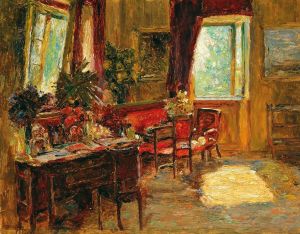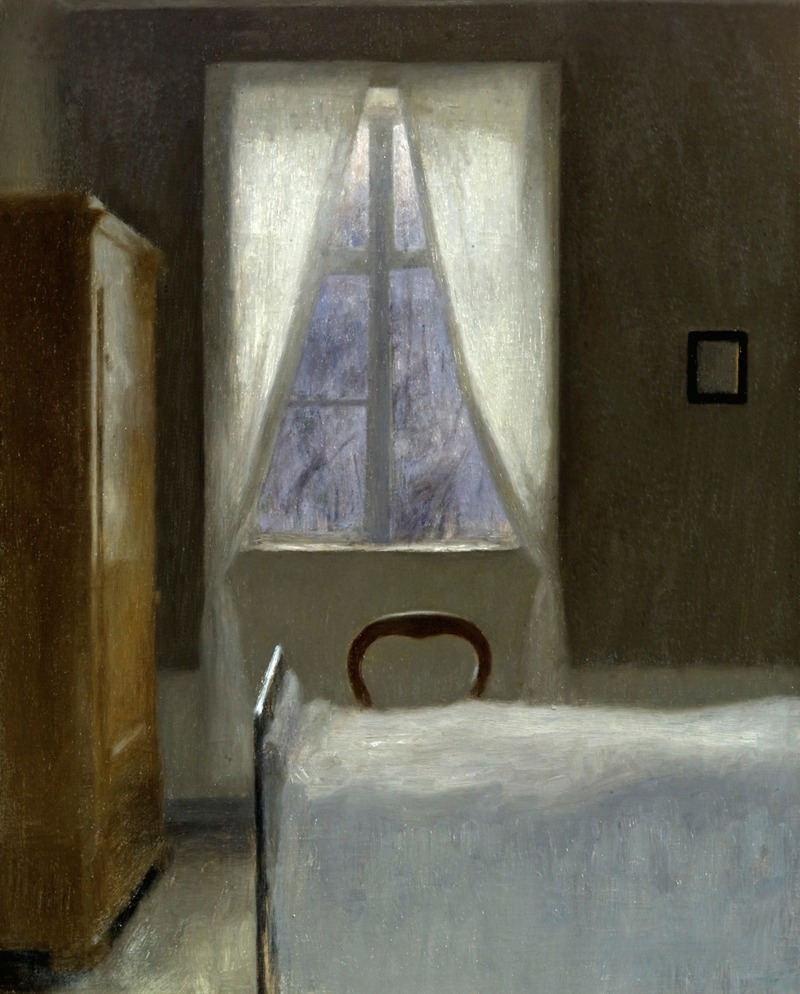
Interior
A hand-painted replica of Vilhelm Hammershøi’s masterpiece Interior, meticulously crafted by professional artists to capture the true essence of the original. Each piece is created with museum-quality canvas and rare mineral pigments, carefully painted by experienced artists with delicate brushstrokes and rich, layered colors to perfectly recreate the texture of the original artwork. Unlike machine-printed reproductions, this hand-painted version brings the painting to life, infused with the artist’s emotions and skill in every stroke. Whether for personal collection or home decoration, it instantly elevates the artistic atmosphere of any space.
Vilhelm Hammershøi's Interior is a notable example of the Danish artist's distinctive approach to painting domestic spaces. Created in the late 19th or early 20th century, this work reflects Hammershøi's characteristic focus on quiet, introspective interiors, often devoid of overt narrative or dramatic action. Hammershøi is widely recognized for his ability to capture the subtle interplay of light and shadow, as well as his restrained, muted color palette dominated by shades of gray, white, and soft earth tones.
The painting typically depicts a sparsely furnished room, often featuring simple wooden furniture, bare walls, and a sense of stillness. Many of Hammershøi's interiors include solitary figures, often women, who are shown from behind or in contemplative poses. These figures, when present, contribute to the enigmatic and introspective quality of his work. In Interior, the focus is on the atmosphere of the space itself rather than on any specific narrative or subject matter. The absence of excessive detail or ornamentation allows viewers to immerse themselves in the quietude and timelessness of the scene.
Hammershøi often painted the interiors of his own home in Copenhagen, particularly his apartment at Strandgade 30, which served as a recurring setting for many of his works. The rooms in his paintings are meticulously composed, with an emphasis on geometric order and the subtle effects of natural light streaming through windows. This attention to light and composition has drawn comparisons to Dutch Golden Age painters, such as Johannes Vermeer, though Hammershøi's work is distinctly modern in its minimalism and emotional restraint.
The artist's choice to focus on interiors reflects his broader interest in creating a sense of introspection and quietude. His works are often interpreted as meditations on solitude, time, and the relationship between humans and their environments. However, Hammershøi himself rarely provided explanations for his paintings, leaving much of their meaning open to interpretation.
Vilhelm Hammershøi (1864–1916) was a prominent figure in Danish art and is considered one of the most important painters of his time. His work gained recognition during his lifetime, and he exhibited internationally, including at the Exposition Universelle in Paris in 1900. Today, his paintings are celebrated for their unique aesthetic and are held in major museum collections, including the National Gallery of Denmark and The Hirschsprung Collection in Copenhagen.
Interior exemplifies Hammershøi's mastery of creating evocative, timeless spaces that continue to captivate viewers with their quiet beauty and enigmatic atmosphere.





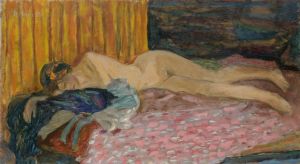
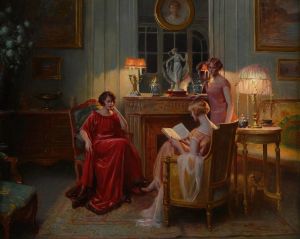
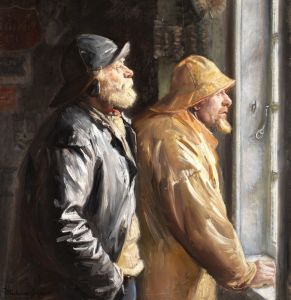
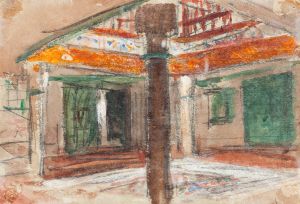
![Designs for staged commercial or trade exhibition displays of coal-fired water heaters and furniture.] [Perspective sketch in orange with rainbow edges](/imgs/249324/s/winold-reiss-designs-for-staged-commercial-or-trade-exhibition-displays-of-coalfired-water-heaters-and-furniture-perspective-sketch-in-orange-with-rainbow-edges-7c407bf3.jpg)
